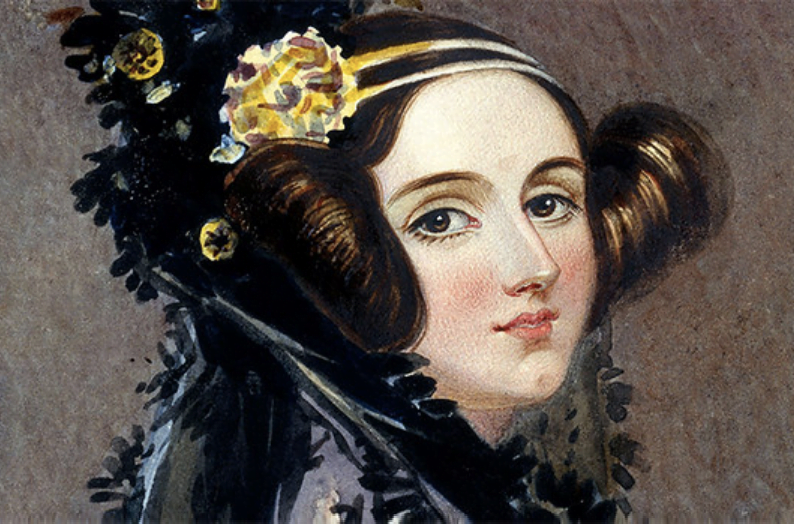Did Ava Lovelace invent the computer? That is a question trending on Google. But no, she did not invent the computer. She did, however, wrote the first computer programme. Her scientific work is outstanding.
About a century before Konrad Zuze designed the first programmable computing machine, in the 1840s, Ada wrote the first computer programme.
Today, we will look at some interesting facts about the first computer programmer.
Daughter of poet Lord Byron
Born in December 1815 in London as Augusta Ada Byron, she was the only legitimate child of Lord George Gordon Byron and his wife Lady Annabella Byron.
Lord Byron was infamous for his many affairs and dark moods. The young woman, Annabella, believed that her religious duty was to guide the troubled poet to virtue.
![]()
She was a gifted thinker and received a Cambridge University education in her home while growing up. She was good in mathematics, and even Lord Byron called her Princess of Parallelograms.
Controversial birth
Lord Byron’s infidelity drove the relationship and marriage to misery. Annabella believed he was “morally fractured” and verging on insanity. The short-lived marriage produced Ada Lovelace. The marriage lasted only for a year. Anabella and Lord Byron separated when their daughter was only weeks old.
At the time, there were rumors about Byron’s relationship with his half-sister, which forced him to leave England for Greece.
Byron wrote, “Is thy face like thy mother’s my fair child! Ada! Sole daughter of my house and heart”. This controversy plagued Ada for the outset of her life.
Excelled in science and mathematics early on
While she was hampered by conspiracy theories in her childhood, Ada still managed to excel in her education, particularly in mathematics and science. It was all thanks to her mother’s love for mathematics.
Social reformer William Frend, physician William King, and her tutor Mary Somerville taught Ada everything she needed to know early on. Her tutor, Somerville, was a Scottish astronomer and mathematician, one of the first women invited to join the Royal Astronomers Society.
Her mother immersed Ada in mathematics, fearing that she might follow in her father’s footsteps if not.
At the age of 12, Lovelace conceptualized a flying machine. After studying the anatomy of birds and the suitability of various materials, she came up with plans to construct a winged flying apparatus.
![]()
She wrote to her mother, “I have got a scheme to make a thing in the form of a horse with a steam engine in the inside so contrived as to move an immense pair of wings, fixed on the outside of the horse, in such a manner as to carry it up into the air while a person sits on its back”.
Working with the “father of the computer
At the age of 17, Ada met the father of the computer. He became her mentor. Ada and inventor and mathematician Charles Babbage worked closely together.
She watched him demonstrate a model portion of his difference engine, an enormous mathematical calculating machine that has led to his being dubbed “the father of the computer”.
She became his protégé. She translated into English an article written by military engineer, and future Italian prime minister, Luigi Menabrea about Babbage’s theoretical analytical engine.
Ada predicted computers could so much more
Many people today view Lovelace as a visionary who predicted that computers could do more than just crunch numbers.
She saw the multi-purpose functionality of the modern computer. Her mentor, Babbage, believed the use of his machines was confined to numerical calculations.
![]()
But Ada believed that even content such as music could be translated to digital form and manipulated by machine.
She wrote that, “the analytical engine might act upon other things besides numbers, were objects found whose mutual fundamental relations could be expressed by those of the abstract science of operations. Supposing, for instance, that the fundamental relations of pitched sounds in the science of harmony and of musical composition were susceptible of mathematics expression and adaptations, the engine might compose elaborate and scientific pieces of music of any degree of complexity or extent”.
She gambled a lot
In the 1840s, Lovelace began a gambling habit that crushed her finances. She once lost more than $4,000 betting on the wrong horse at the Epsom Derby.
Encouraged by con men, Ada would turn her prodigious talents towards gambling and programming the outcomes of horse races.
Writing the first published computer program
In 1842, she was commissioned to translate a French transcript of one of Babbage’s lectures into English. But she added her own section simple titled “notes”.
Then, she went on to write a detailed collection of her own ideas on Babbage’s computing machines that ended up being more extensive than the transcript itself.
Within those pages of notes, Ada made history. That happened in Note G, where she wrote an algorithm for the Analytical Engine to compute Bernoulli numbers, the first published algorithm ever specifically tailed for implantation on a computer.
Her contributions weren’t instantly recognized
Lovelace’s ideas about computing were so far ahead of their time. She was a visionary. It took nearly a century for technology to catch up.
When her notes on analytical engine were published in 1943, they gained little to no attention. But they found a much wider audience when B.V. Bowden republished them in the book, Faster Than Thought: A Symposium on Digital Computing Machines”.
When the field of computer science dawned in the 1950s, Lovelace found a new following in the digital age.
There is a computer programming language named in her honor
During the 1970s, the US Department of Defense developed a computer programming language to supersede the hundreds of different ones used by the military. Navy Commander Jack Cooper suggested naming the new language Ada in honor of Lovelace in 1979. The proposal was approved.
The language is still used around the world in operation of real-time systems in the aviation, transportation, financial infrastructure, and space industries.



